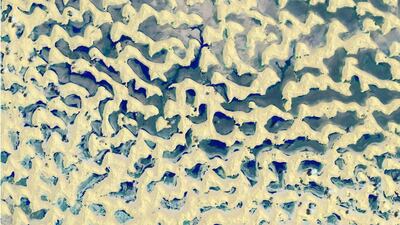Newly released images captured from space show the effect of tropical cyclone Mekunu on the Empty Quarter, after the storm dumped several years’ worth of rain on the desert and created temporary lakes between the sand dunes.
Tropical cyclone Mekunu tore through the region in May, dumping three times Oman’s annual rainfall – 278 millimetres – on the vast area in just 24 hours.
Now footage released by space agency Nasa has revealed the effects of the storm on what is usually one of the driest places on the planet.
“Mekunu dissipated as it tracked north-west over land, but still delivered plenty of water to the desert,” stated Nasa’s website.
“Notice where water collected in the lowlands between sand dunes. For comparison, the second image was acquired on May 13 and represents the typically dry appearance of the interdune sand flats.”
The Empty Quarter, also known as the Rub Al Khali, is the largest contiguous sand desert in the world and spans the southern third of the Arabian Peninsula, including the UAE.
The images were taken of the eastern part of the desert in Saudi Arabia, near the border with Oman.
It has been 20 years since rainwater last filled the flats, according to Nasa’s Earth Observatory website. It usually receives just three centimetres of rain each year.
__________
Read more:
Cyclone Mekunu kills eleven and leaves dozens missing
Images from UAE satellites used to fight climate change
__________
The Landsat programme – the longest continuous space-based record of Earth's land – has also recently released pictures of Dubai that shows the breathtaking pace of the city’s development.
Part of a series released by the US space agency, the images show how quickly cities around the world have grown over the past 30 years.
Using images from its Landsat programme, the first picture shows Dubai in 1984, when it was home to 350,000 people and little more than a strip along the Arabian Gulf.
The second image, from last year, when the population had expanded to more than three million, shows the city creeping deep into the desert.
Many of its most recognisable landmarks are also visible on the coast, including Palm Jumerah, the World – and even upcoming developments such as Deira Islands.























